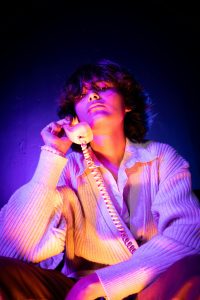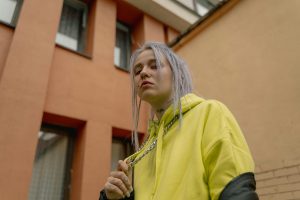Red Browning: Meaning, Causes, Symbolism & Complete Guide
s“Red Browning” is a term used across multiple fields, design, beauty, photography, nature, and even food. While it may sound simple, the concept carries deeper meaning depending on the context. Sometimes it refers to a color shade, sometimes to a process of discoloration, and sometimes to an artistic effect caused by lighting or oxidation.
In this in-depth article, we will explore what red browning truly is, the science behind it, its significance, and how it is used across various industries. This guide is perfect for designers, photographers, beauty enthusiasts, gardeners, or anyone looking to understand this unique color phenomenon.
What is Red Browning?
Red Browning is the transition or blending of the color red into brown, often due to:
Natural oxidation
Melanin or pigment changes
Environmental exposure
Heat or light effects
Chemical reactions
Artistic or stylistic choices
It can refer to anything that turns from red to brown or a color shade that lies between red and brown.
Common Contexts Where “Red Browning” Appears
1. Red Browning in Nature
Nature showcases red browning more often than we realize. It is seen in plants, leaves, soil, flowers, and even animals.
Leaves Turning Red-Brown
When leaves switch from green to red and eventually to brown, the red browning effect is visible. This is due to the breakdown of chlorophyll and the rise of anthocyanins and tannins.
Soil & Rocks
Certain soils turn reddish-brown because of iron oxidation, creating rich and warm earth tones.
Animal Fur or Skin
Many animals experience red-brown shading due to seasonal coat changes or natural pigmentation.
2. Red Browning in Food
Food often goes through red browning due to heat or chemical reactions.
Examples Include:
Cooked meat turning from red to brown
Apples or potatoes browning after cutting
Caramelized sugar gaining a reddish-brown hue
Baked goods developing a red-brown crust
This is caused by the Maillard reaction, enzymatic browning, or caramelization.
3. Red Browning in Art & Design
Designers often use red browning as a warm tone to add depth, character, and rustic appeal.
Its use can be seen in:
Interior design themes (rustic, farmhouse, earthy tones)
Digital and graphic design color palettes
Traditional artwork
Fashion textiles and fabrics
Red browning tones give a natural, grounded, and vintage feeling to any artwork or space.
4. Red Browning in Photography & Editing
In photography, red browning can occur naturally or be added intentionally.
Natural Red Browning
Sunset and golden hour lighting
Autumn landscapes
Vintage film photos
Editing Techniques
Photographers often enhance red browning for luxury, earthy, or moody aesthetics using Lightroom or Photoshop.
5. Red Browning in Beauty & Hair Color
In beauty, red browning is a popular undertone used in:
Lipsticks
Blush
Eyeshadow
Hair dye
Red-Brown Hair Color
This trendy shade is a mix of warm chocolate brown with hints of red, giving a rich, dimensional look.
Scientific Explanation Behind Red Browning
Red browning often occurs due to oxidation, light exposure, or heat.
1. Oxidation
This is the most common cause. When something reacts with oxygen, pigments change and create a brownish tint.
Examples:
Fruit browning
Rusty soil turning reddish-brown
Fading paint or fabrics
2. Melanin or Pigment Shifts
In plants, leaves, or even hair, pigment levels shift, creating red-brown color transitions.
3. Heat Reactions
Cooking, baking, and roasting bring out red-brown tones due to chemical reactions.
Symbolism & Meaning of Red Brownings
Colors carry emotional and psychological meanings.
Red Brownings symbolizes:
Warmth
Stability
Earthiness
Strength & reliability
Autumn or seasonal transition
Comfort & coziness
It is often used to evoke nostalgia and natural beauty.
Shades Within the Red Brownings Family
Here are some commonly associated color tones:
1. Rustic Red-Brown
A deep, earthy shade used in vintage themes.
2. Terracotta
A warm, clay-like red-brown.
3. Chestnut
Brown with subtle red highlights.
4. Mahogany
Dark brown with a strong red undertone.
5. Brick Red
A muted reddish-brown shade seen in architecture.
Where Red Brownings is Used Today
1. Modern Interior Design
Farmhouse, rustic, boho, and vintage aesthetics widely use red-brownings tones for:
Wooden décor
Furniture
Accent walls
Ceramic pieces
Rugs and textiles
2. Fashion Industry
Red-brown colors are popular in:
Boots
Leather jackets
Handbags
Autumn clothing collections
3. Branding & Marketing
Many brands use red-brown tones to communicate:
How to Use Red Brownings Effectively (Practical Tips)
1. In Design
Use as a background shade to create depth
Combine with neutral tones like cream, beige, or off-white
Avoid overpowering bright colors
2. In Photography
Shoot during golden hour for natural red-brown tones
Use warm temperature settings
Apply “Moody” or “Vintage” filters
3. In Hair Coloring
Choose shades like mahogany, auburn, or chestnut
Maintain with color-protecting shampoos
How to Prevent Unwanted Red Brownings
Sometimes red brownings is unwanted, especially in food or materials.
To Prevent Food Browning:
Add lemon juice
Refrigerate immediately
Use antioxidants
Store in airtight containers
To Prevent Wood or Paint Browning:
Apply sealants
Avoid direct sunlight
Use UV-protected coatings
Conclusion
Red Brownings is more than just a color, it’s a natural transformation, an artistic choice, and a meaningful tone used globally across many industries. Whether in food, nature, design, or beauty, red brownings adds warmth, depth, and character. Understanding its causes and uses helps you appreciate how this rich shade enhances everyday life.
FAQs
1. What is the meaning of red brownings?
Red browning refers to the process where red tones shift into brown shades due to oxidation, heat, or natural pigment change.
2. Why does food turn red-brown when cooked?
Red-brown colors form due to the Maillard reaction and caramelization, which occur when food is heated.
3. Is red browning a natural color?
Yes, it appears naturally in leaves, soil, wood, animals, and even human hair.
4. How can I prevent fruit from browning?
Use lemon juice, keep fruit airtight, and store it in a refrigerator.
5. What colors pair well with red-brown in design?
Cream, beige, off-white, olive green, and muted gold pair beautifully with red-brown for warm aesthetics.







